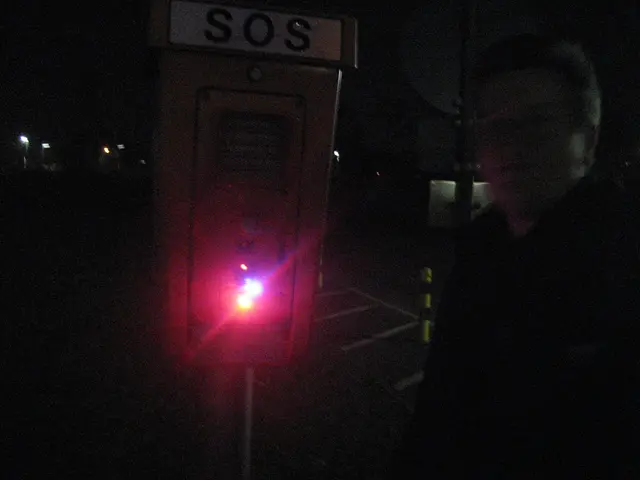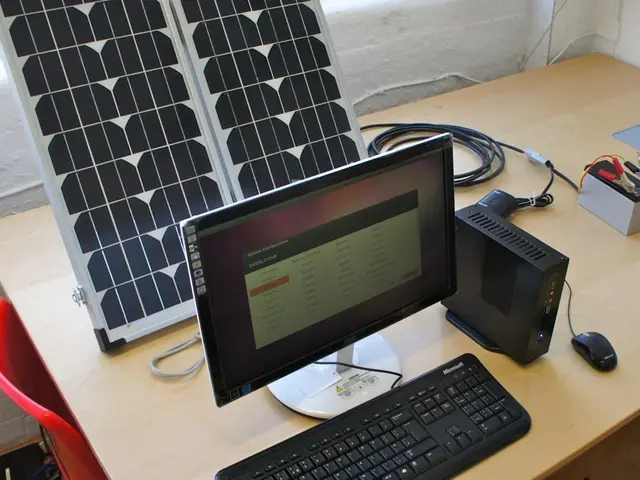Collaborative Energy Venture by Poland and Lithuania Threatens to Disrupt Russian Power Influence
🤙 Hey there! Let's dive into the latest scoop on the Harmony Link, a strategic energy initiative between Poland and Lithuania 🇱🇹🇵🇱. This isn't just any power connection – it's set to beef up the energy security of the region by the year 2030!
The masterminds behind this project? No other than Polskie Sieci Elektroenergetyczne (PSE) and Litgrid, the Lithuanian transmission system operator. In an unusual turn of events, the power line is ditching its originally planned route through the Baltic Sea and going for an overland journey instead.
So, what's the Harmony Link all about? Well, it involves constructing a powerful 220 kV dual-circuit AC line between the Ełk Bis station in Poland and a new station in Gizai, Lithuania. PSE will be building two new stations, Norki and Wigry, as well as upgrading the existing 220 kV line from Ostrołęka to Ełk Bis. The project is planned to reach a major milestone by the end of 2024, with PSE and Litgrid making a final investment decision and paving the way for procurement processes and obtaining necessary permits. Construction tenders are lined up for 2026, and the new connection is expected to be operational by the end of 2030.
Now, you might wonder why they chose the overland route instead of yesterday's cool submarine cable idea. Things got a bit financially tricky with the cable and converter station costs increasing substantially. So, the operators had to reassess their options and ultimately settled on the overland route. A technical feasibility study conducted by the Gdańsk branch of the Institute of Power Engineering in June 2024 confirmed that the overland option is doable, and the performance parameters of the interconnected systems would be comparable to the undersea solution.
The primary advantage of the Harmony Link is that it promises to synchronize the transmission systems of Lithuania, Latvia, and Estonia with the Continental European synchronous area (CESA), reducing their dependence on Russian frequency regulation. They're already connected by the LitPol Link, an overland power connection that's been rocking since late 2015.
This strategic pivot in Poland and Lithuania's approach to regional energy security underscores the ongoing efforts to integrate the Baltic states into the broader European energy network. The Harmony Link project marks an important milestone in their efforts to diminish their reliance on Russian infrastructure. As they push the Harmony Link forward, this initiative serves as a testament to the adaptability of regional energy strategies in the face of evolving economic and geopolitical challenges. And when it's all said and done, it'll not only bolster the energy security of Poland and Lithuania but also be a vital stepping stone towards greater energy independence for the Baltic states.
Don't forget to sign up for our weekly news recaps to stay in the loop on all things Poland ✌️🇵🇱. And if you're all caught up, feel free to click here to sign up for the next one!
We don't spam! 📧📥
- In 2024, a technical feasibility study conducted by the Gdańsk branch of the Institute of Power Engineering confirmed the overland route for the Harmony Link project as viable, with comparable performance parameters to the undersea solution.
- The Harmony Link, a strategic energy initiative between Poland and Lithuania, aims to reduce the dependence of Lithuania, Latvia, and Estonia on Russian frequency regulation by synchronizing their transmission systems with the Continental European synchronous area (CESA).
- The Harmony Link project is not only expected to bolster the energy security of Poland and Lithuania but also serve as a vital stepping stone towards greater energy independence for the Baltic states.
- The Harmony Link involves constructing a powerful 220 kV dual-circuit AC line between the Ełk Bis station in Poland and a new station in Gizai, Lithuania, with PSE manufacturing two new stations, Norki and Wigry, and upgrading the existing 220 kV line from Ostrołęka to Ełk Bis.
- The primary advantage of the Harmony Link is that it will be operational by the end of 2030, and it will involve an overland journey instead of a submarine cable, due to increased costs associated with the cable and converter station.
- The Harmony Link is a crucial component in the ongoing efforts to integrate the Baltic states into the broader European energy network, marking an important milestone in diminishing their reliance on Russian infrastructure.









